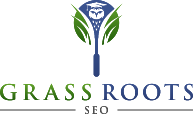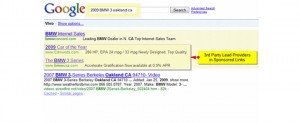Here are 6 SEO myths perpetuated by less than ethical professionals and lazy optimizers that does not fit play well in today’s digital marketing environment. These six SEO scare tactics can hold your business back from potential growth and valuable ROI.
Scare Tactic #1 – SEO Is An Event
SEO is a process, not an event. You cannot just SEO the site, launch it, and think optimization is done. With constant changes that evolve the digital landscape, being stuck in the past is dangerous and downright foolish. Many business do not keep up with the changes either in thoughts or actions, and do not embrace the change as an opportunity to be better than competitors. These businesses create systems and process that strongly cling to what use to work, a last grasp at the past. Looking forward to the future is not done by looking backwards. Effective SEO demands forward thinking and flexibility to engage with new ways of doing optimization. This does not mean that your business can skip the fundamentals of search engine optimization, rather it assumes that the SEO basics are in place as a solid foundation to build on. If your business is simply doubling-down with commitment to last years tactics, then you are exposing yourself to many missed opportunities that best in class SEO offers.
Scare Tactic #2 – Focus Only On Keywords To Win Business
The singular obsession with keyword phrases is too granular. Old SEO goals focused on rankings for keywords; not only getting the phrase ranked, but keeping it at all costs. That thought encouraged all efforts to get the top spot on page one as the priority, no matter how it was done. This old SEO mentality of the past, would drive focus on one principle keyword or keyword phrase. The SEO practitioner researched a targeted keyword where they wanted to rank, and then focused on that keyword only. This singular approach exposes those types of tactics to the whims of algorithm changes and is extremely reactive SEO.
- Keyword density is important – keyword density makes content unreadable. There’s a reason SEO’s laugh at this joke; “An SEO walks into a bar, bars, saloon, whiskey bar, pub, and orders a drink, beer, shot, liquor, wine…”. Natural semantic phrases used in search work better in moderation.
- Abundant redundant keywords – usually found in links, footer, page titles, anchor text, alt text, are aggressive over-optimization and once again reads and looks like spam. Avoid doing this.
This is no longer the world of effective SEO. Exceptional digital markers look beyond the keyword and into the mind of the people that are doing searches. Today’s SEO is about user intent and user engagement with the brand. Focusing on intent highlights the need to optimize for semantic phrases and long tail searches. Semantic SEO is all about understanding what the person is actually trying to accomplish with their search and how best to present your brand for that intent. Alignment of the brand and how people engage with the brand is the new focus. How your brand is viewed is the improvement that will drive organic success and ultimately more business results.
Scare Tactic # 3 – Rank As a Success Metric
 Sending this little red flag up the flagpole opens all kinds of doors. When that long list of unsolicited keywords that your business does not rank for suddenly becomes important, it’s time to just stop. What’s the economic benefit of these terms when most have zero relevance to user intent? Then in the next business discussion with that client, they hand you a 20 page ranking report tracking hundreds of utterly useless keyphrases? Been there too? Then ask this question, “How are your analytics? What’s the correlation between the ranking report and your actual business results?” Even though your business may rank for hundreds of terms, the key phrases from an unwanted solicitation become the focus and urgently require immediate action. Rarely does this fear tactic ever benefit your business. If your definition means SEO is chasing rankings, then note that SEO style is dead. Omni-channel marketing is the here and now in the current marketing environment. Brand marketing across multiple channels offers the best chance for success.
Sending this little red flag up the flagpole opens all kinds of doors. When that long list of unsolicited keywords that your business does not rank for suddenly becomes important, it’s time to just stop. What’s the economic benefit of these terms when most have zero relevance to user intent? Then in the next business discussion with that client, they hand you a 20 page ranking report tracking hundreds of utterly useless keyphrases? Been there too? Then ask this question, “How are your analytics? What’s the correlation between the ranking report and your actual business results?” Even though your business may rank for hundreds of terms, the key phrases from an unwanted solicitation become the focus and urgently require immediate action. Rarely does this fear tactic ever benefit your business. If your definition means SEO is chasing rankings, then note that SEO style is dead. Omni-channel marketing is the here and now in the current marketing environment. Brand marketing across multiple channels offers the best chance for success.
Rankings are dangerous because they are assumptive:
- Assumption #1- the ranked key phrase has an audience that’s relevant to my business
- Assumption #2 – the ranked term is aligned with searcher intent
- Assumption #2 – the searcher will actually click on the search results to my website
- Assumption #2 – the keyword is aligned with my landing page
- Assumption #2 – the entire engagement listed above will result in a conversion to a client or sale
These ranking reports are easy but often manipulate the truth of the business ROI. It’s always a bit awesome to for a client to say “We’re #1 in Google for bounce house injury lawyer in Tupelo, MS!” or “We’re the top of page one for Red Widgets In Wichita!!”
Rank is easy to sell, because it’s easy to understand. It’s even a bit sexy because it appeals to ego and vanity. However it’s the responsibility of professional marketers and savvy business people to move the rank conversation from the old way of thinking into a more meaningful discussion, one that will benefit the business. Focus on measurable KPI’s for Brand, Audience, Engagement, and Outcomes. These are metrics that when improved, increase contacts, promote sales and drive real money to the bottom line. Don’t fall into the easy trap of taking the path of least resistance, plan an SEO strategy that will target the right keyword phrases that target the relevant audience, at the right time, that presents the business or brand in the best possible light. That it key to long term growth in a new SEO environment.
Scare Tactic #4 – The Sun Rises And Sets On Google
For those businesses that perpetually wear “Google-goggles”, you may not know this, but you have a problem. If you are super excited that so much of your organic traffic comes from Google and you think that means you are “winning”, please think again. It means that with all of your eggs in the Google basket, your business is actually at risk. The next Panda, Penguin, Hummingbird, or other animal update can put a serious pinch on your online presence. Just as smart investors never put all of their money into one single stock to mitigate their risk, smart SEO strategies create diverse traffic mediums with multiple inbound channels.
Progressive SEO strategies look for opportunities to promote your business or brand in many places. Your plan needs to be as diverse as your audience, to maximize success opportunities. Omni-channel marketing (always on, always everywhere) is the new normal to get your value proposition to the masses.
Scare Tactic # 5 Content Is King
Guess what? Content is king, but crap content is not. Developing thin, anemic content focused on ranking for a keyword is not only a bad SEO technique that just won’t go away, it can actually do way more harm than good. There was a time that using the right keywords in the correct amount, could lead to improved rankings. Google’s Panda algorithm filters absolutely loves to crush that junk content into oblivion.
The key was simple, content was always supposed to be written for readers first. Many people chose to write content for the search engines first, and human readers second. This type of content is exactly what the search engine algorithms try to minimize. The best content is well written, filled with relevance to the search and delights the targeted audience with a “WOW’ factor that’s very engaging and highly shared.
 It’s time to move away from creating thin content for search engines. Start developing your brand and business by writing your audience. Understand the who and the why and it’s becomes easier to create great content. Writing quality high value content for your audience does not mean it’s mutually exclusive from writing for search engines. Quite the opposite, awesome content is generally shared and can drive meaningful back links. If you are not excited about your content, how will your audience be excited?
It’s time to move away from creating thin content for search engines. Start developing your brand and business by writing your audience. Understand the who and the why and it’s becomes easier to create great content. Writing quality high value content for your audience does not mean it’s mutually exclusive from writing for search engines. Quite the opposite, awesome content is generally shared and can drive meaningful back links. If you are not excited about your content, how will your audience be excited?
How About Some Article Submissions?
Please no. Going hand in hand with low quality content is generating Article Submissions as link bait. Long past it’s prime, stop doing this right now before Panda seeks you out. Article submissions consisting of thin content might be any easy way to create some quick back links to your domain, but is this really the best use of your marketing efforts? The time and effort to be consistent in article submissions might be better applied elsewhere.
For example, why not try to build some actual relationships by networking within your industry and sharing stories and blog posts that can real value to their website and the online community of your audience? What better way to build quality and authority for your own web properties?
What About Some Press Releases?
Seriously, no. Now for the other thin content tactic to never use again, press releases without real news. Please just stop. As a true method for public relations, blasting your business or name on the newswire on the slim chance to get some links from a legitimate news channel is not a sound practice. Issuing non-newsworthy Press Releases as a links promotional tool mirrors the waste of time like article submissions. Again, in a post Panda and Penguin world, this practice puts your business at risk when done incorrectly. How would you like your back link profile to show the submitter as the authority in the anchor cloud instead of your business? This happens more often than you may think. If you do something truly remarkable, newsworthy that adds real value to your community, a press release MAY be in order and MAY be effective to promote your brand. If this is not the case, just keep building relationships with trust over time.
Scare Tactic #6 – SEO Works The Same For Every Site
This is a big one, but clearly not true. SEO is not the same for every site. Content profiles differ, back links differ, anchor clouds differ, code base, site architecture, site design, domain tenure, all of these things differ site to site. Applying sound solid SEO principles will benefit every website, but results will vary greatly. A single SEO magic trick will not be “the silver bullet” to drive results. Search engine optimization is really a series of a thousand little details done well in context to each other that maximizes value and generates performance results.
 So how do you move forward with a SEO strategy for your business? Start by understanding exactly where you are today. Use your analytics to establish business critical goals and KPIs. Make your KPIs DUMB – doable, understandable, manageable and beneficial. Focus on effective – what are the metrics that actually grow your business and creates positive ROI? Understand that search engine algorithms remain dynamic and in a constant state of refinement. With this awareness refine your focus to only do the right things, the right way, all the time. It’s not always pretty, sexy or fun, but it still works. SEO tactics must support your business goals, either economic or strategic in nature. SEO strategy success simply comes down to working towards established goals. The goals must align with the actions that make money and have KPIs for each of those actions. Your focused efforts here helps ease concerns about Panda, Penguin or any other algorithm shifts.
So how do you move forward with a SEO strategy for your business? Start by understanding exactly where you are today. Use your analytics to establish business critical goals and KPIs. Make your KPIs DUMB – doable, understandable, manageable and beneficial. Focus on effective – what are the metrics that actually grow your business and creates positive ROI? Understand that search engine algorithms remain dynamic and in a constant state of refinement. With this awareness refine your focus to only do the right things, the right way, all the time. It’s not always pretty, sexy or fun, but it still works. SEO tactics must support your business goals, either economic or strategic in nature. SEO strategy success simply comes down to working towards established goals. The goals must align with the actions that make money and have KPIs for each of those actions. Your focused efforts here helps ease concerns about Panda, Penguin or any other algorithm shifts.
A seasoned digital marketing professional with over 20 years of expertise in digital marketing, search engine optimization, search engine marketing, brand development, conversion optimization, lead generation, web development and data analytics. He is a strategic digital marketing thought leader in a multitude of business verticals including automotive, education, financial services, legal marketing and professional services.









